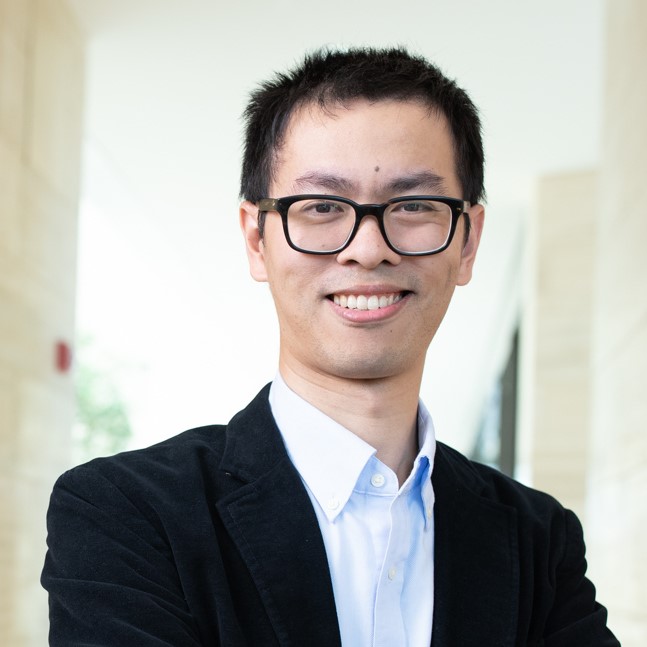by Buck Institute
July 25, 2023 . BLOG
The exposome takes center stage in the Zhou lab
Our lifelong environment has a dramatic influence on health and aging
The Human Genome Project promised extraordinary insight into underlying causes of disease and new prevention strategies and cures, and indeed it has transformed biology with innovative new ways to approach genetics. However, it turns out that genetics can only explain about 10 percent of diseases.
 “Although a lot of genes have been discovered that regulate lifespan, environmental factors account for 90 percent plus of the variation in human lifespan,” says Buck assistant professor Chuankai (Kai) Zhou, PhD. “It’s very complicated, but the numbers do not lie.”
“Although a lot of genes have been discovered that regulate lifespan, environmental factors account for 90 percent plus of the variation in human lifespan,” says Buck assistant professor Chuankai (Kai) Zhou, PhD. “It’s very complicated, but the numbers do not lie.”
Environmental exposures must be included in order to understand the causes of aging and diseases, and eventually prevent or reverse the processes. “The lifelong environment, which is called the ‘exposome,’ has a dramatic influence on our health and aging outcomes,” he says.
The Centers for Disease Control and Prevention (CDC) defines “exposome” as the measure of all the exposures of an individual in a lifetime and how those exposures relate to health. This exposure begins at conception, and includes any non-genetic factors that might affect health, including diet, drugs, exercise, sleep, pollution, stress and even social interactions.
The interaction of environmental factors with biological systems is what ultimately determines lifespan, says Zhou. So both environmental exposure and genetic differences must be accurately measured at the same time to understand the effects.
Zhou wants to take in the “big picture” of the effects of innumerable environmental exposures, and how they interact with cell biology. To do so, his lab studies how proteins change with age and to different stressors. They focus in particular on a quality of proteins: how they are folded within cells, which is crucial to how proteins perform their functions. During aging, proteins tend to misfold. Protein misfolding may be an underlying cause for many age-related diseases, says Zhou, including Alzheimer’s disease and Parkinson’s disease.
To simplify the process of looking for thousands of changes in both young and aging cells, the team uses yeast as a model organism, which Zhou describes as “a living test tube.” By using a single-cell organism that shares many biochemical processes with human cells, his team can understand protein folding and misfolding systematically and in great detail, which allows them to dissect intricate networks within cells. The team also uses cultured human cells to confirm their discoveries. Recently his lab has introduced robotics to automate sample preparation and super-resolution imaging. “We have heavily invested time in breaking technique barriers,” he says. “It is very exciting for us to be able to contribute to understanding how the exposome affects aging and diseases.”
Zhou’s investment in research techniques allows his team to take an unbiased look at a swath of cellular processes, rather than focusing on a single protein or organelle. “There will be a lot of new things coming out that people were never thinking about before,” he says.
Overall, his lab is moving towards studying what he calls “plasticity of proteins,” which refers to the adaptations proteins make during aging or times of environmental stress. “Everything that you can imagine that can be changed is changed,” he says, including the folding of some proteins. “We are very interested in protein plasticity in response to different environments.”
Alzheimer’s disease is one example of a real-world problem that Zhou’s research can help solve. Misfolding of the amyloid-β protein in the brain causes an accumulation that leads to amyloid plaques, the classic marker of the disease, which can occur years before any clinical symptoms. An interesting observation, says Zhou, is that this protein is present in the brain from birth. “It's there throughout the lifespan. The question is: why does this protein start to change during aging?” he wonders, noting that the folding of that protein is definitely influenced by the environment.
The team hopes to uncover how a protein carries out different functions in different situations. Zhou thinks that both aging and environmental influences change the process and impact protein folding plasticity.
“A wild hypothesis is that proteins in young cells are not necessarily performing the same function in old cells; they are probably doing different functions at different ages,” he says. “This is brand new territory.”

SHARE